Trending
 Another woman alleges Oren Alexander raped her in New York
Another woman alleges Oren Alexander raped her in New York Here’s why luxury sales are booming in Boca Raton’s most expensive neighborhood
Here’s why luxury sales are booming in Boca Raton’s most expensive neighborhood Elliman broker Tracy Tutor comes forward with Oren Alexander claim
Elliman broker Tracy Tutor comes forward with Oren Alexander claim Investors scoop up dev site near Pompano Beach casino for $29M, amid near record South Florida multifamily pipeline
Investors scoop up dev site near Pompano Beach casino for $29M, amid near record South Florida multifamily pipelineA journey through Chicagoland real estate through John Hughes’ lens

Writer and director John Hughes is best known for two things: teen comedies, where he earned his stripes (“The Breakfast Club,” “Ferris Bueller’s Day Off”); and holiday movies (“Home Alone,” “Planes Trains and Automobiles”).
His best-known family films in both genres also evoke a warmth and coziness, which is due in no small part to where they’re set: Chicago’s wealthiest suburbs that reflect Midwest white-collar success and serve as a stage for the shenanigans that unfold in Hughes’ films.
Indeed, Winnetka, Illinois, (where “Home Alone” is set) and its surrounding towns have the priciest homes in Illinois, according to Realtor.com, with a median price of $1.65 million, and one listing going for $8.9 million.
While real estate agents don’t have to worry about the Wet Bandits or Principal Ed Rooney dropping by (or breaking in), they do have to worry about spiking interest rates, low inventory and a more sluggish residential market, even in such a prominent area as Winnetka.
Still, even in a down market the idyllic homes in Hughes’ films would generate interest. And with the holiday season in full swing, and “Home Alone” and “Planes Trains and Automobiles” in full rotation, The Real Deal asked North Shore agents how some of the most iconic of the bunch would do if they hit the market.
“Home Alone” (671 Lincoln Avenue, Winnetka, Illinois)
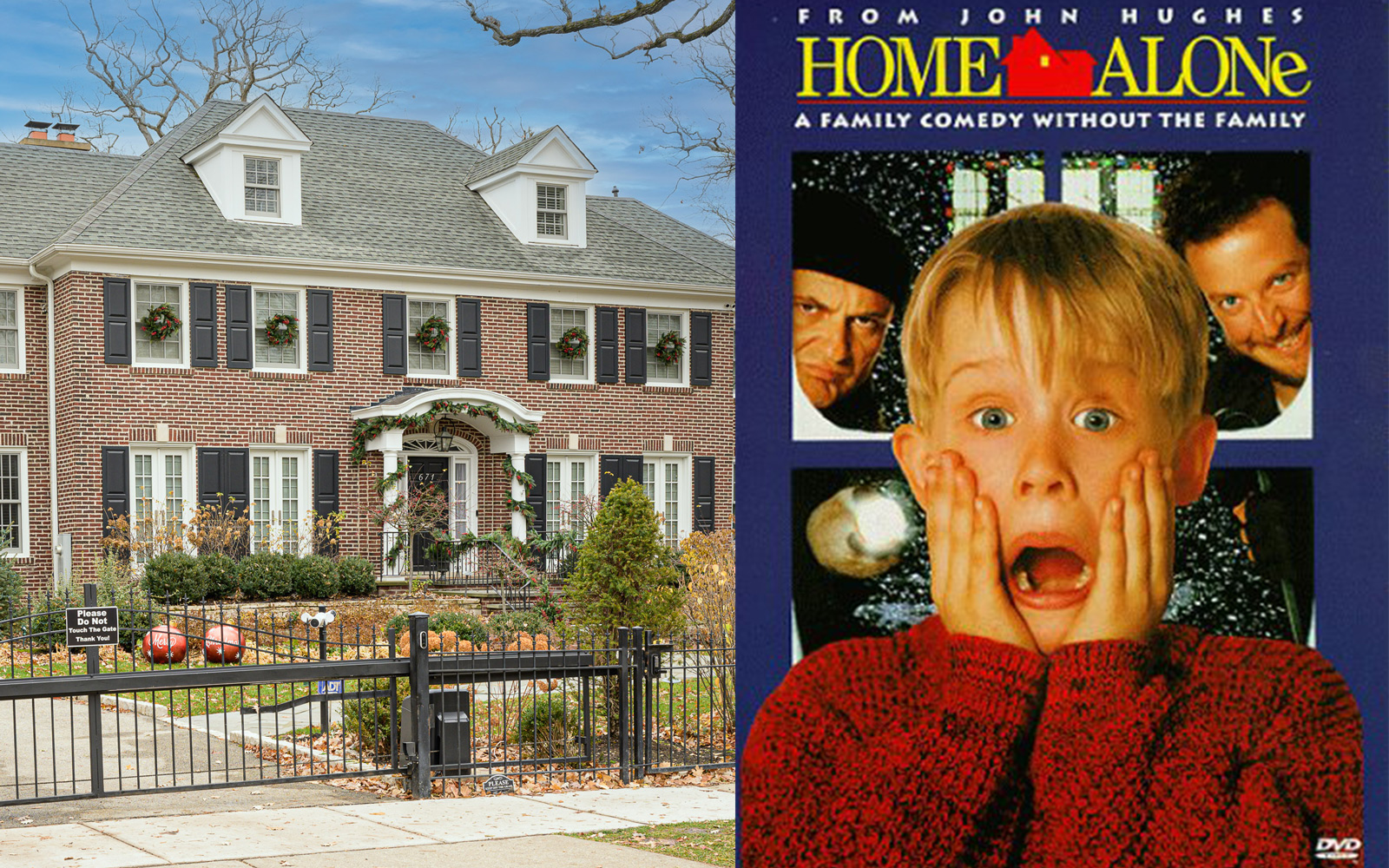
Hughes, who wrote but did not direct this 1990 holiday classic, picked quintessential North Shore homes in most of his work for a reason, according to @properties Jena Radnay.

“You know how the family is living, you know exactly where the bedrooms are going to be because he wants to give viewers the comfort that there is nothing to them that would make them feel uncomfortable about how these characters live in these houses,” she said.
The 5,400-square-foot McCallister home, where Kevin thwarted two bumbling would-be burglars certainly fits that description. The 1920-built red-brick Colonial last sold for $1.5 million. It has 10 bedrooms, six bathrooms and has gone under a significant renovation within the past couple of years.
Radnay says if the home were listed today, it would likely sell in the upper $3 million range.
“Planes Trains and Automobiles” (230 Oxford Road, Kenilworth, Illinois)
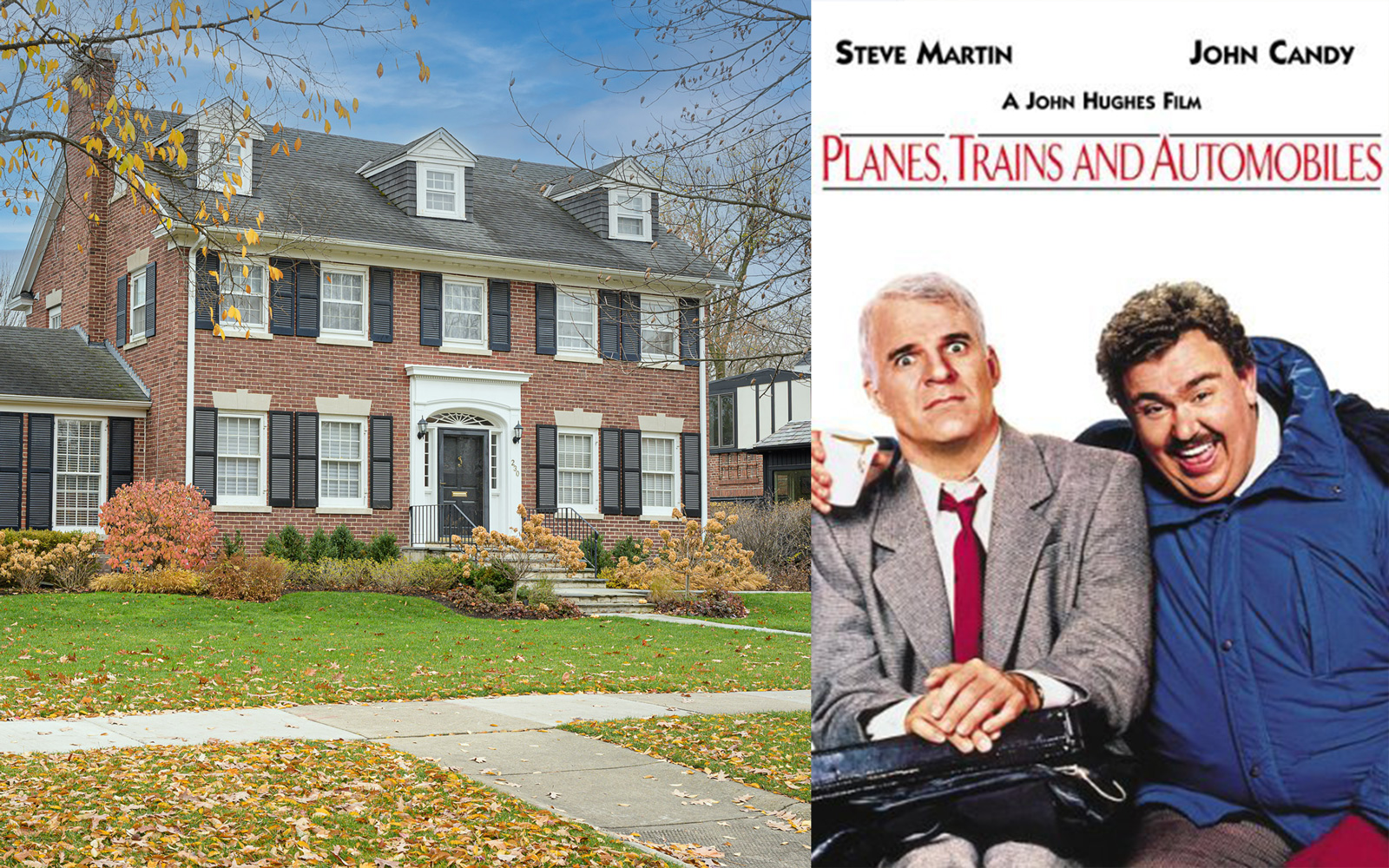
The home in the 1988 Thanksgiving classic road trip comedy belonged to Steve Martin’s character, Neal Page, and he endured a series of pitfalls and follies on his way back from New York to get there.
Another red-brick Colonial, the 107-year-old six-bedroom sits on one-third of an acre in Kenilworth, about an hour outside of Chicago. And interestingly enough it is owned by a real estate agent, John Mawicke of @properties, who bought it in 2009.
I grew up in town; my mom was a local realtor, he said. “It seemed like [the house] got to a mispriced number [$1.3 million], so we got to that number.” (He paid $1.4 million)

Mawicke, 56, says he is a fan of the movie and gets a handful of visitors — some from as far away as California and Canada — every year looking to take photos or just get a peek of Hollywood history. Some are more passionate than others, like the woman who dressed in costume and shot a YouTube video out front, all of which Mawicke takes in stride.
“If you buy a house like that you’ve got no choice but to embrace it,” he said, adding that he lives about 3/4 of a mile from New Trier High School, which inspired Hughes to write “The Breakfast Club.”
Not that he’s looking to, but Mawicke says if he were to sell his house today, it’d likely fetch about $2 million due to some of the work he’s done on the home — including a new kitchen — and also because of the tight supply in the area.
“There’s no inventory in town, so who knows?” he said, though a 6,500-square-foot, six-bedroom, five-bathroom house a few doors down at 244 Oxford Road sold for $2.2 million in 2022
“Ferris Bueller’s Day Off” (370 Beech Street, Highland Park, Illinois)
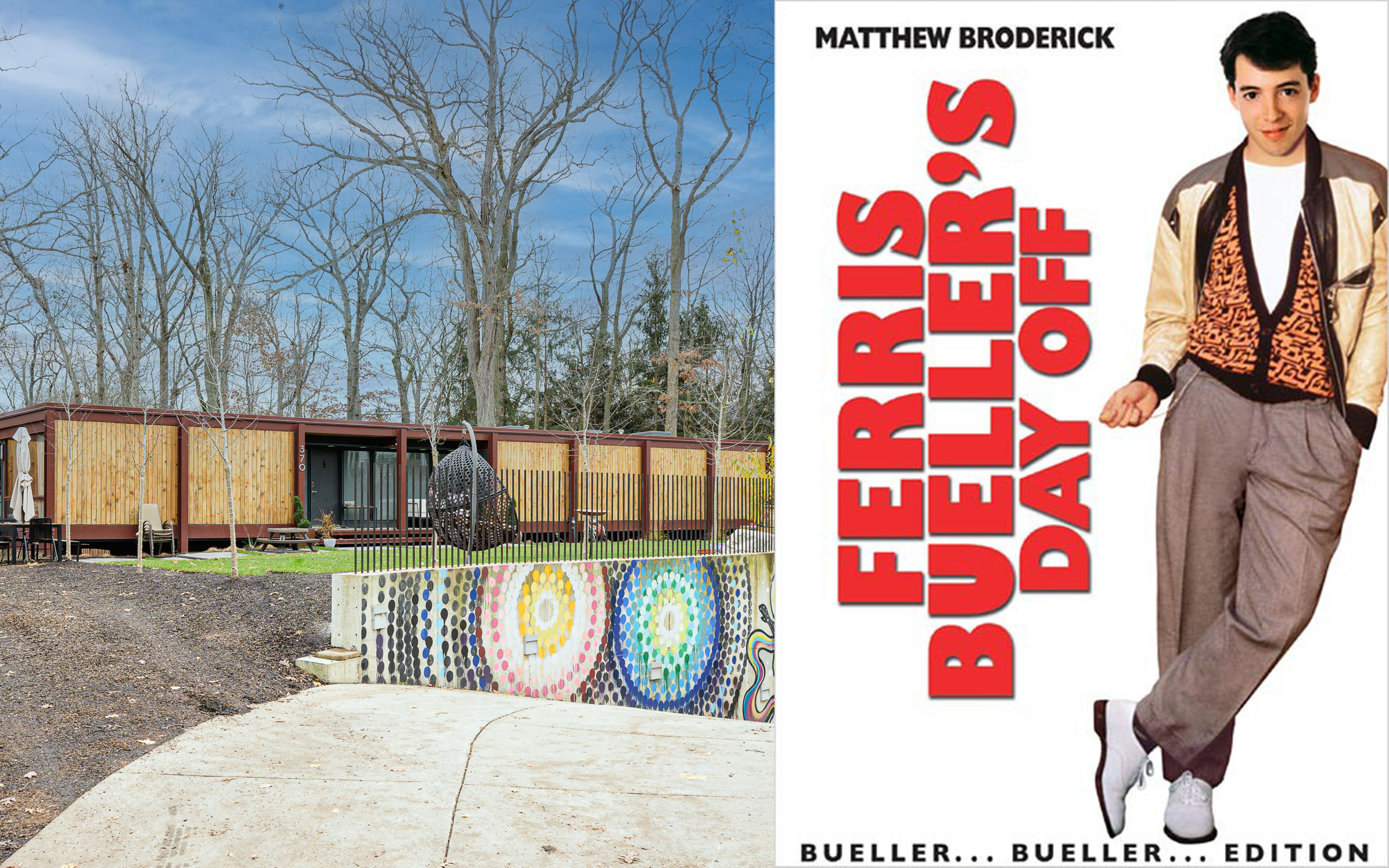
The antithesis of what a typical Hughes home looks like, this four-bedroom, four-bath steel and glass ranch overlooking a ravine is where Ferris friend Cam Frye lived, and where that sweet 1961 Ferrari 250 GT California Spyder convertible died in the 1986 movie.
“It’s almost like a watcher-in-the-woods house; it’s sitting up in the ravine,” Radnay said. “It’s a showcase house, it’s a display house. It is exactly what Cam isn’t as a friend but yet his parents are. It’s why Ferris is best friends with him.”
The 1953 home, about a 40-minute drive from Chicago, sold in 2014 for $1 million, and Radnay says it would go for about $2.2 million today. That’s quite a turnaround from the beginning of the 2010s, when the home was listed and couldn’t find a buyer, mostly because it wasn’t liveable, according to DNA Info. The house couldn’t keep an inside temperature of more than 52 degrees because of the windows. After an extensive renovation, both inside and underneath the home, it’s now functional and marketable — Radnay says now more than ever.
“That’s a ranch, so people love them,” she said. “It’s desirable, and there is a need now for efficient, one floor living. It’s a great house for an empty nester. It’s on the North Shore, it’s on a lake, it’s very marketable today.” There aren’t many apples-to-apples comparisons of homes in
“16 Candles” (3018 Payne Street, Evanston, IL)
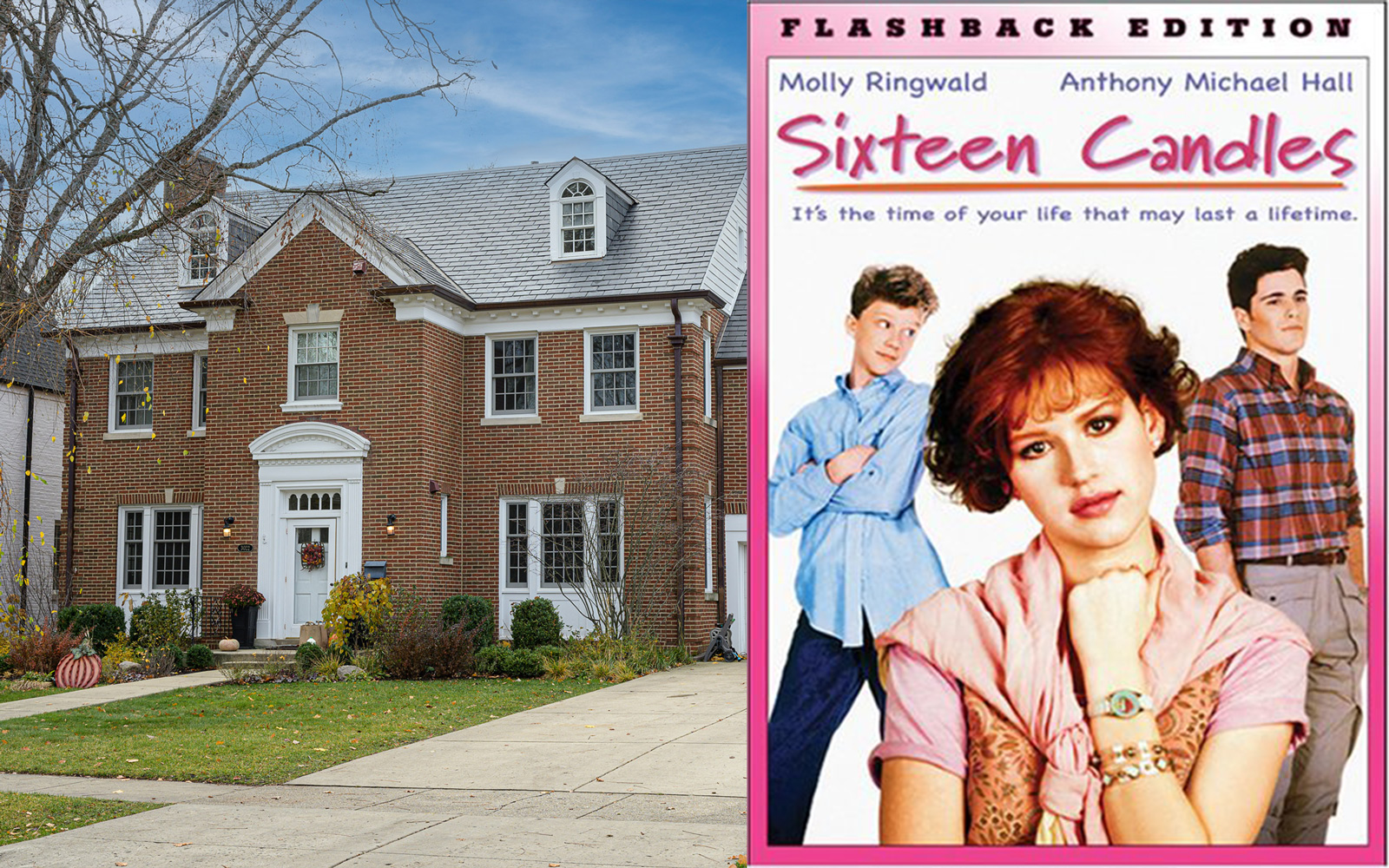
Radnay said the opening line in “16 Candles” (“Ginny, Mike, Sarah Sam! Come on! everybody up!”) is one of the most famous lines in the movie because it showcases that a big family lives in the 3,250-square-foot, six bedroom, six bathroom home with a walk-up path to the door.
“They have that front entrance, mom is holding a briefcase, it’s the quintessential American family,” she said. “[The home is] not too big, not too small. Out of all the houses he shot, it’s the smallest one.”
While some of the film’s aspects haven’t held up (we’re looking at you, Long Duk Dong), the house, about a 30-minute drive from Chicago, remains highly desirable because of its location and the tight market. A five-bedroom, six-bathroom home a few doors down at 3022 Payne Street sold for $1.6 million in 2022.
Radnay says she could get a bit more.
“It listed for $1.7 million a few years ago, it’d probably go for just under $2 million today,” Radnay said.
“Uncle Buck” (2602 Lincoln Street, Evanston, Illinois)
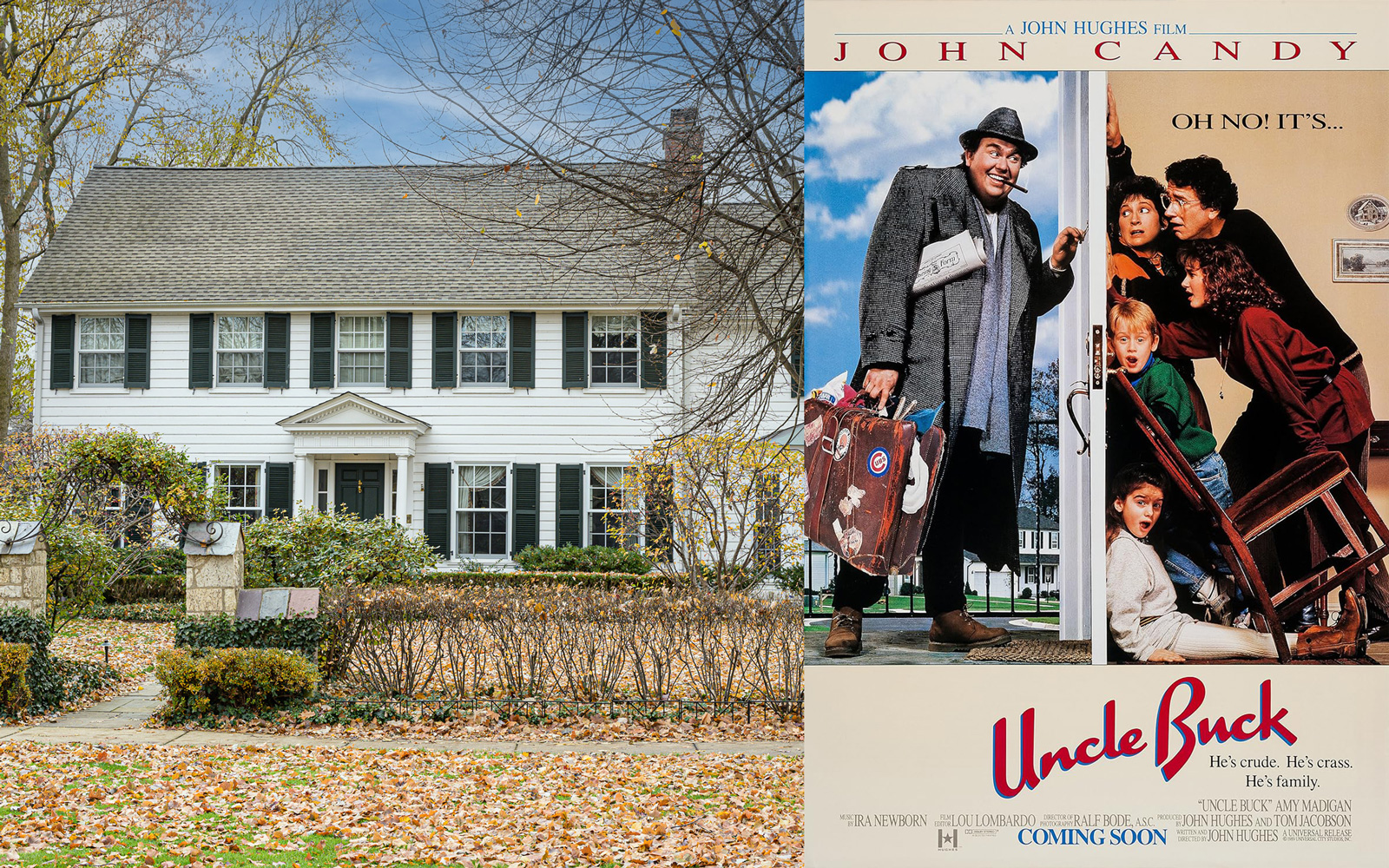
Another traditional selection that shows the family — the children of which are under Uncle Buck’s care — has a little more money and stature, according to Radnay.
“The arch here is a cedar clapboard, it’s very traditional,” Radnay said. “[Hughes] wanted to portray a house that was quaint, but someone could get lost not knowing where to go.
Radnay said the 1924 four-bedroom, five bathroom, 5,200-square-foot home on about one-third of an acre would likely go for about $2 million, though with a caveat that there haven’t been a lot of transactions in that well-to-do area of Evanston. A 2,900-square-foot, five-bedroom, four-bathroom home a few blocks away is listed for $1.6 million.
Radnay believes the “Uncle Buck” home would still sell quickly in today’s market.
